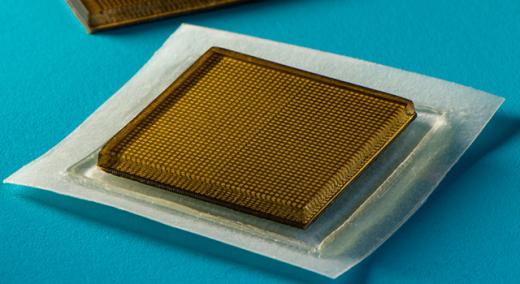Ultrasound imaging is a safe and noninvasive window into the body’s workings, providing clinicians with live images of a patient’s internal organs. To capture these images, trained technicians manipulate ultrasound wands and probes to direct sound waves into the body. These waves reflect back out to produce high-resolution images of a patient’s heart, lungs, and other deep organs.
|
ADVERTISEMENT |
Currently, ultrasound imaging requires bulky and specialized equipment available only in hospitals and doctor’s offices. But a new design by MIT engineers might make the technology as wearable and accessible as Band-Aids.
In a paper that appeared recently in Science, the engineers present the design for a new ultrasound sticker—a stamp-sized device that sticks to skin and can provide continuous ultrasound imaging of internal organs for 48 hours.
…

Add new comment